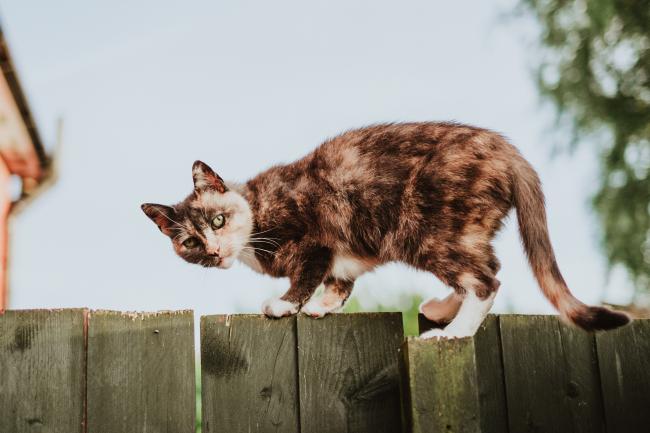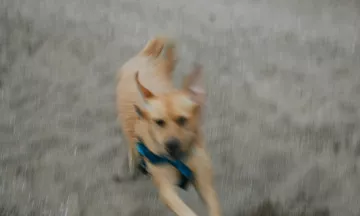Why do pets run away?
Pets may run away because they feel scared or bored, are in an unfamiliar place or because they have separation anxiety. This can be more of a problem during noisy New Years Eve celebrations, especially when fireworks are involved. Furthermore, some energetic dog breeds and puppies may be more likely to escape due to their energy and curiosity. Either way, it’s important to work out why your pet is escaping, as solving this can prevent the problem in the first place.

A frightened pet can be an amazing escape artist and may test the limits of your home security. And unfortunately, an escaped pet is at risk of being hit by a car or injured by another animal. At best, your pet might be picked up by the local council which can result in a hefty fine.
Fortunately, planning ahead can really reduce the chance of your pet escaping. Start by doing a safety check around your home with the following list of escape methods in mind.
How do pets escape from home?
There are many ways pets can escape from home, with some ways more surprising than others. Here are just some of the ways a pet can escape from home that you should look out for:
- Windows - pets can break through fly screens, small openings or even glass if they are scared enough.
- Jumping or climbing off balconies
- Breaking or chewing through gates
- Digging under fences
- Finding weak points in fences and walls
- Slipping out when the front or back door is open
- Running out of an open car door during pick up or drop off
- Opening unlocked doors
- Jumping or climbing fences
How to prevent my pet from escaping
If your pet has run away before, be sure to repair or alter the escape point so that it doesn’t happen again. This may include putting chicken wire under a fence to prevent digging. You may also need to replace gates or move furniture away from fences that a pet could use as a platform to spring off. And importantly, if you are a pet sitter and your fences aren’t at least 1.5 - 1.8 metres high and very secure, you should not be boarding dogs unsupervised in your backyard. You may even consider extending your fence at an inward angle to make escape less likely.

If you are a cat owner or cat sitter, we recommend keeping cats indoors or in a safe outdoor enclosure. This helps to protect wildlife and prevent your cat from running away.
Make sure your pet has a cosy, safe space that they feel secure in. For example, this could be a crate, spare room or playpen. If your pet’s anxiety is causing them to escape frequently, speak with your vet. They may recommend an anti-anxiety medication. Read more about separation anxiety here.
Has my pet really run away?
Occasionally, a pet may not have run away, but instead can be found hiding under the bed or in the back of a cupboard. This is particularly the case for nervous cats when they are being looked after by a pet sitter.
Therefore, don’t panic if you can’t spot a cat immediately. Instead, check all cupboards, drawers, under furniture and other little nooks around the house.
Other ways to keep your pet safe from running away
Microchipping and registering your pet is important for keeping them safe. By doing this, there is a far higher chance that your pet will be reunited with you if they are found. Desexing can help prevent your pet from escaping too, as intact pets are more driven to run away and roam. Here are some more tips to keep your pet safe from going missing.

Pets that have adequate mental, social and physical stimulation are less likely to feel anxious or bored. As such, try the following strategies:
- Daily walks: allow your dog to sniff around and explore new routes.
- Trick and obedience training: this will engage your dog mentally as well as physically.
- Obstacle courses and scent training: hide a treat in your garden or home and put your dog’s nose to the test.
- Chasing games and fetch: both dogs and cats benefit from playtime.
- Food puzzles and slow feeders: this has the added benefit of helping your pet eat slowly and engaging their problem-solving skills.
- Environmental enrichment: swap out your pet’s toys from time to time and give them plenty of items to chew and sniff.
Lastly, a pet sitter can step in and help give your pet some exercise and playtime to prevent separation anxiety. Visit Pawshake today to get in touch with a friendly local pet sitter.





